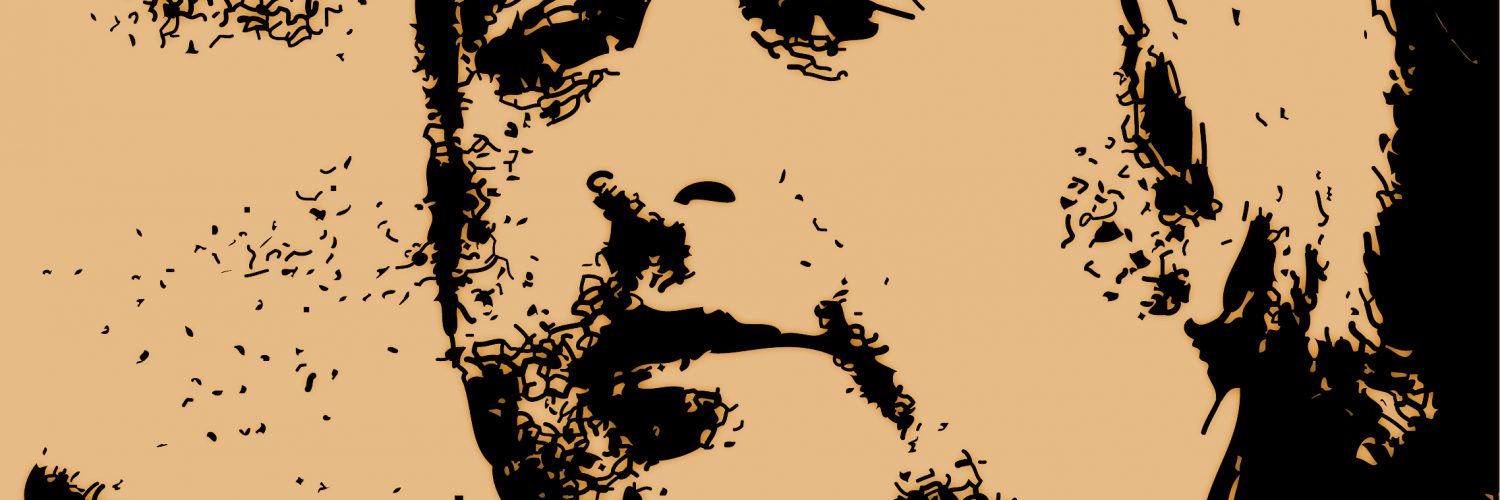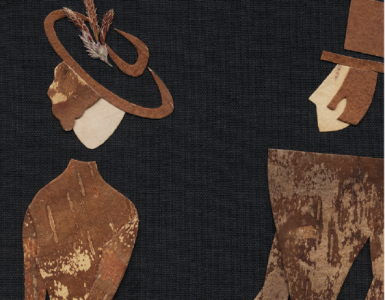by Denise Noe
First published in May/June, 2007, Volume 4, Issue 2, The Hatchet: Journal of Lizzie Borden Studies.
 Frank Spiering begins his book on the Borden murders, Lizzie, with a firm statement: “On a warm white-honeysuckle-scented August morning in 1892, Lizzie Borden sat in her room on the top floor of the narrow wooden frame house at 92 Second Street planning how to murder her father and stepmother.”
Frank Spiering begins his book on the Borden murders, Lizzie, with a firm statement: “On a warm white-honeysuckle-scented August morning in 1892, Lizzie Borden sat in her room on the top floor of the narrow wooden frame house at 92 Second Street planning how to murder her father and stepmother.”
It is colorful writing. The phrase “warm white-honeysuckle-scented” draws the reader into the scene in an effective way.
Spiering soon informs us of the motive behind Lizzie’s homicidal designs. As students of the Borden case well know, both Lizzie and her sister Emma acknowledged to investigators that they felt betrayed when father Andrew Borden bought Abby’s stepmother’s share of her house and gave it to Abby, five years prior to the murders. In Spiering’s book, their anger had recently been magnified when they found out he was planning to add another injury by putting the Swansea farm in Abby’s name.
According to Spiering, that had been the final blow for Lizzie. She obtained poison and sprinkled arsenic into the broth of the mutton roast that Bridget Sullivan was cooking for the family.
Every Borden aficionado knows that members of the household had been feeling ill the day before the murders. Abby Borden sought help from Dr. Seabury Bowen. Dr. Bowen visited Andrew Borden and found him somewhat recovered. The physician probably decided that deliberate poisoning was unlikely.
Spiering repeats as fact the commonly made assertion that August 4, 1892 was an exceptionally hot summer day and depicts the personages as sweating profusely in the oppressive heat. However, evidence quoted by Leonard Rebello in Lizzie Borden Past & Present shows that it was a fairly temperate day for the time of year with temperatures ranging from a low of 67 degrees to a high of 83 degrees. The Lizzie Borden Quarterly also ran articles showing that the super-hot summer day is a legend.
Spiering writes in 1984, “There would never be a photograph of Emma Borden.” In fact, a photograph did later surface of Emma and was published by David Kent in 1992 in his Forty Whacks. It shows a plain middle-aged woman with dark hair and a rather large face. This woman, who was by all accounts reticent and austere, bears a striking resemblance to the flamboyant British writer Oscar Wilde.
Emma is the killer in Spiering’s theory. According to his book, Lizzie and Emma had not conspired but were each independently planning to commit the murders! Lizzie was still plotting to murder with poison when Emma came home from the trip to Fairhaven that had provided her with an alibi. Then Emma got the job done with an axe. Again it must be emphasized that this is a truly remarkable theory since it postulates that both sisters were plotting murder and neither was conspiring with the other.
Instead, in Spiering’s reconstruction, Emma simply comes home from her cover trip to Fairhaven carrying an axe. Startled, Lizzie gasps and is shushed by her elder sister. Lizzie instantly realizes the weapon’s purpose and falls into cahoots with her sister, leading her up the stairs to the guest room which Abby is straightening up.
Spiering splashes his pages with purple prose when he writes about Emma’s attacks on her victims. “The axe hit her [Abby] again and again,” he states, “each time Emma wielding it with all her might, the blood from Abby’s neck and head spraying across the floor, hanging like a fog in the air near the edge of the bed as Emma kept hitting her, hitting her hitting her. . . .
And then she stopped, as Abby’s head toppled off, held on only by a thin sinew of flesh.”
Spiering has Emma hiding behind the closet door on the front landing while Lizzie walks downstairs when Andrew comes home. Then, of course, Andrew takes his place on the couch for a nap. Spiering writes:
The thin tall figure of Emma stood above him. Her face was a hideous glare.
He tried to shield his eyes but before his fingers got there the axe hit him.
His body twitched with the blow, yet he could not wince. It had crunched his nose in half.
Blood spit through his teeth. He tried to scream a second before the blade cut him across the cheek.
Later, Spiering writes of Emma’s officially known return to the house on 92 Second Street: “Here a residue of inexplicable violence and revolting butchery permeated the humid air with a thick, dull rancidness, attracting multitudes of hungry flies circling through the open windows and buzzing over the traces of blood tracked from room to room.”
Perhaps the oddest thing about Spiering’s case for Emma’s guilt is that he never really makes it in the body of his book. He writes as if her guilt is fact and leaves his explanation for it to the notes at the back of Lizzie. There he tells us that he believes he found the key to Emma’s guilt in the age of the friend she was said to have been visiting in Fairhaven, Jennie Brownell. He tells us that records disclosed that Jennie Brownell was born in 1868 which would have made her 24 in 1892 to Emma’s 40 [sic]. Spiering observes that it is unusual for people of such widely varying ages to be good friends. Thus, he surmises that the trip must have been to provide her with an alibi for the murders she planned to commit in Fall River.
It is indeed unusual that friends would be so far apart in age. However, a friendship with a much younger person is hardly enough to hang a murder rap on anyone, but Spiering tries to do exactly that with Emma Borden.
What’s worse, it appears that Spiering built this shaky edifice on a falsity! According to a much more reliable source, Len Rebello writing in Lizzie Borden Past & Present, Emma Borden was visiting her friend Helen Brownell whom Rebello describes as “a fifty-four year old dressmaker.”
A theory as superficially outrageous as to have Lizzie and Emma each plotting murder independently ought to be buttressed by much solid evidence. Spiering does not offer any.
The hypothesis of Lizzie as ineffective poisoner, but not hatchet wielder, leads Spiering to an interesting but hardly convincing speculation as to why she burned a dress even though no one had seen blood on her garments on the day of the slayings. He believes she feared that scientific tests would reveal traces of arsenic on the dress she destroyed.
Unfortunately, Spiering often substitutes assertion for evidence. He has a chapter called “The Lie” about a confession to the Borden murders that Lizzie was supposedly bullied into signing. However, the title might most aptly apply to the chapter itself.
Spiering recounts certain known facts associated with Lizzie’s alleged theft from the Tilden-Thurber Company, an art gallery in Providence, Rhode Island (Spiering gives it as “Province” but that is a typing or proofing error of a forgivable sort). He writes that a woman in 1897 brought a porcelain painting she had received as a Christmas gift from Lizzie Borden into the store because it was damaged and she wanted it repaired. An alert salesperson recognized the painting as one that had disappeared from Tilden-Thurber several months before and been presumed stolen along with another work that went missing at the same time.
A warrant was issued for Lizzie Borden’s arrest. However, it was never served, leading to yet another mystery surrounding Lizzie. Spiering gives us what he claims was the reason that warrant never led to an arrest.
According to him, Lizzie was asked to visit Tilden-Thurber to discuss the charge. She went to the gallery where she met in its office with owners Henry Tilden and William G. Thurber as well as an associate of the firm named Morris House. Spiering writes that she “indignantly” denied stealing the paintings and insisted she had purchased them. Then she went on to declare that she “was being hounded because of her association with the killings of her stepmother and her father.” Spiering claims the three men were uncertain as to how to proceed and asked her to return again for another discussion about it. Tilden supposedly made certain she would do so by warning, “Unless the situation is resolved, we shall have to publicize the incident.”
The next day, Spiering asserts, Tilden met with Stephen C. Metcalf, an editor with the Providence Journal. Tilden was convinced Lizzie was guilty of the Borden murders and believed he could settle the question once and for all. Spiering has him telling Metcalf, “Do you realize that with the power I have to send that murderess to jail as a shoplifter, I can make her confess to the murders.”
In Spiering’s book, Metcalf agreed to typeset the article titled “Lizzie Borden Again.” Before publishing it, Tilden and Metcalf showed it to Lizzie when she met them a second time at the store to discuss the allegedly stolen paintings. Spiering describes Lizzie as having “flashing” eyes when the proofs were displayed to her and shouting, “You wouldn’t dare publish that! I could sue you for every last cent should that article ever appear!” Tilden threatens to have it published unless she signs a confession. An outraged Lizzie refuses and departs in a huff.
At Tilden’s urging, Metcalf publishes the story. When the paper comes out, a detective goes to Maplecroft with it in hand. He tells Lizzie that he will arrest her unless she accompanies him to the offices of Tilden-Thurber. Spiering writes that, after “blustering and fuming,” Lizzie put on a fur coat and accompanied the detective to Tilden-Thurber, the offices of which must have been rather familiar to her by then.
She arrives to find a typewriter with a piece of paper in it waiting for her confession.
Spiering claims that a war of nerves took place around a conference table between Lizzie and the four assembled men. Tilden tells her, “All I am asking is that you admit that the acts of August, 4, 1892, were yours, and yours alone. The moment the statement is signed, we will drop everything. We will never serve that warrant, and you can walk out of here a free woman.”
Hours pass as they urge her to confess. William Thurber gives a time limit of midnight and says he will order her arrest at that time unless she makes a confession. That hour was reached and Thurber indicates that Detective Parker should serve the warrant.
Spiering has Lizzie suddenly shouting, “Just a minute!” Then she goes to the typewriter. She types a message and signs it. She is allowed to leave unmolested.
The men crowd around the typewriter to find a “confession” stating, “Unfair means force my signature here admitting the act of August 4, 1892 as mine alone” and signed by Lizbeth A. Borden.
The so-called confession is rather puzzling as it would hardly hold up in court since, according to Spiering’s own account, it was made under duress.
It is also a lie, not on Lizzie’s part as Spiering writes, but on his own part. The reader must turn to the notes at the back of the book to discover that, despite the rich detail in which Spiering has described this dramatic event, there is zero evidence it ever occurred. He claims to have taken it from notes made by William G. Thurber. However, he also writes that Edward Radin, in his 1961 book, Lizzie Borden, The Untold Story, proved, with the help of handwriting expert Ordway Hilton, that the signature on the supposed confession was a forgery!
Spiering also plays fast and loose with the facts when he discusses the possibility of Lizzie having romances. He republishes an affectionate letter that she wrote, which he captions “Lizzie’s letter to a female friend.” That letter, familiar to Borden buffs, is indeed an interesting and suggestive document.
My dear Friend
Where are you how are you and what are you doing? I dreamed of you the other night but I do not dare to put my dreams on paper. Have you been away and has your little niece been to visit you? We have been home all summer. I spend much time on the piazza in my steamer chair reading and building castles in the air. I hope you have been away and are well and strong now. Do you expect to do much this fall and are you going to N.Y.? Every time we pass your corner the pony wants to turn down. The weather has been so warm and full of thunder storms I am quite ready for fall.
I should be very glad to hear from you.
Sincerely
L. A. Borden
August twenty second
1897
Despite Spiering’s certainty that it was written to a female, the salutation, “My dear Friend” could be to a person of either sex. Lizzie writes, “I dreamed of you the other night but I do not dare to put my dreams on paper.” Spiering calls this highly ambiguous phrasing an example of Lizzie being “explicit about her sexual longings.” While Spiering implies that Lizzie is a lesbian, it in fact suggests nothing at all. The dream could have been of a sexual nature or it might have been viewed as inappropriate to write because of some other aspect since dreams are notoriously odd and confusing.
Unfortunately, Lizzie is not the only book in which Spiering has forsaken truth for sensationalism, writing fiction while pretending to write fact. As I wrote in my article on the tragic murder of 12-year-old Polly Klaas by Richard Allen Davis, a story that appears online in Court TV’s Crime Library, Spiering fictionalized in a most irresponsible manner in his book on the Klaas case.
Entitled Who Killed Polly? (published in 1995, two years after the crime), Spiering’s book departs from the known facts of the case to suggest that Polly Klaas might still be alive and that she was sold into sexual slavery. Spiering has little to base this hypothesis on other than a speculative statement made by Polly’s paternal grandfather Joe Klaas. “She was the right age,” Joe Klaas noted. “She could be easily sold. There is no question in my mind that she was going to be sold.” Witnesses reported seeing a man other than Polly’s known murderer, Richard Allen Davis, near the Klaas home close to the time of the crime and a gray Honda (which Davis did not drive) parked close to it.
From these wisps, Spiering concocts the existence of a conspiracy to kidnap Polly so she could be taken to Saudi Arabia, Asia, or Latin America to sexually serve men. Spiering continues that these supposed conspirators hired Davis to kidnap the girl and then took her away from him. How about the body? Spiering writes that a body was planted attired in clothing from the Klaas household. He says that these wily conspirators counted on Davis having a poor memory so that he could not reveal the powers behind his crime, and that they knew he would abide by the convict’s code of silence. Spiering goes on to advise his readers that it is not too late and that they should work to “FIND POLLY.”
However, it is too late. Polly Klaas’ body was identified through fingerprints, dental records, and forensic anthropology.
Frank Spiering was a talented writer. He described scenes and personages well. He also chose fascinating subjects on which to write. But he did not inspire confidence in his readership because he didn’t know the difference between fact and fiction and which genre to write in to deserve the respect of the reading public.
Works Cited:
Noe, Denise. “All About Polly Klaas and Richard Allen Davis,” Crime Library, http://www.crimelibrary.com/serial_killers/predators/klaas/1.html.
Rebello, Leonard. Lizzie Borden Past and Present. Fall River, Massachusetts: Al-Zach Press, 1999.
Spiering, Frank. Lizzie. NY: Pinnacle Books, 1984.
Spiering, Frank. Who Killed Polly? Monterey, CA: Monterey Press, 1995.






